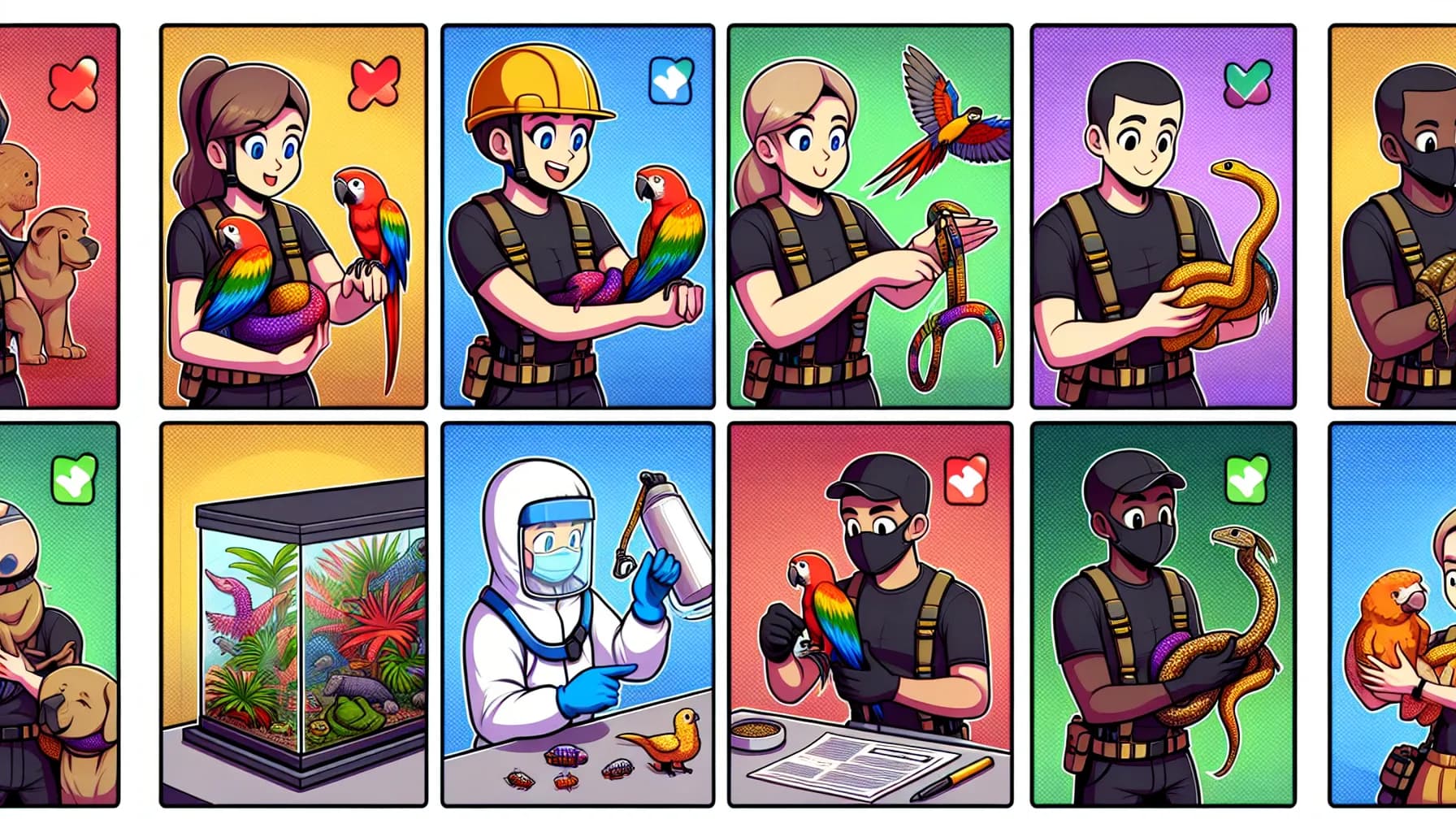
Career day at the zoo: Exploring the diverse roles of zookeepers and their colorful companions
Owning an exotic pet transcends traditional pet care, demanding a unique set of responsibilities to ensure their safety and well-being. This meticulously crafted checklist guides exotic pet owners through creating a secure and stimulating environment tailored specifically to the needs of varied species. It encompasses everything from the construction of escape-proof living spaces to the specific dietary requirements necessary for each animal's health.
Detailed sections on habitat setup, including appropriate ventilation, lighting, and temperature controls, are included to closely mimic the pet’s natural environment, promoting a stable and healthy life. Additionally, the checklist covers regular health checks and emergency preparedness, providing essential guidance on health monitoring, vaccinations, and the management of potential illnesses.
Safety measures to protect both the pet and its owner are emphasized, including handling training and the use of secure handling equipment. With this checklist, exotic pet owners are equipped to ensure that their pets not only survive but thrive in their care, minimizing risks while maximizing the quality of life for these fascinating creatures.